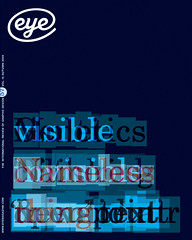Autumn 2005
Art on newsprint
The G2’s Caravaggio special took newspaper printing into art book publishing territory
On Thursday 17 February 2005, G2, the tabloid supplement to UK broadsheet The Guardian decided to dispense with its usual mix of sideways-looking news features and columns, and devote a whole issue to art writer Jonathan Jones’s quest to see every known painting by Caravaggio. What resulted was an audacious piece of newspaper publishing that puts many art books to shame. Yet it is a project whose content and scope seems at first to be at odds with the ephemeral nature of a daily.
Jones pitched the 10,000-word essay to Guardian Arts editor Charlie English, who commissioned it immediately, knowing that an exhibition devoted to the artist was planned for London’s National Gallery. 1 He had collaborated with Jones on previous specials: one on Charles Saatchi and one on ‘Lost Art’. The motivation for the special came from the editorial department, based on an assumption about Guardian readers’ thirst for art. The fact that Jones first published this piece in the paper – whose readership includes the title’s international community of Internet users 2 – suggests that newspapers are moving into a territory previously occupied by book publishing. The project proved no more expensive than previous specials the paper has run, and it maintained its independence by accepting no funding from sponsors. (The only advertisements in the entire issue are a quarter-page Guardian travel offer and the usual single page of Entertainments classifieds.)
The special is confidently illustrated with the artist’s work; English and Jones selected and sized all the images. The cover shows the severed head of Goliath in detail from David with the Head of Goliath (1606-10). The contorted face is that of the artist, and displays a thoughtful synergy between design and content. Double-page spreads of Judith Beheading Holofernes (ca.1599) and The Beheading of Saint John the Baptist (1608) are lavish in their quality, and demonstrate how far newspaper printing has been refined since the launch of Eddy Shah’s Today, the UK’s first colour daily newspaper, nineteen years ago. 3
Given the crudeness of the stock and the speed of printing, the image quality is remarkable. The Caravaggio special issue was printed ahead of the usual schedule, allowing for more colour than if it were printed on the run with that day’s broadsheet, as is usual for G2. Extra time was allocated for scanning and proofing of images. One hopes the same care is taken when The Guardian switches to the compact ‘Berliner’ size, planned to happen by 2006.
The success of this special shows the power of content and bold editorial decisions. There were no complaints about the disruption of the usual G2 format, and Jones was even invited on to a Channel 4 television news programme the following day to talk about it. The publication blurs the boundaries between traditional book publishing and the role of a newspaper in today’s instant news culture. It also sends a message to designers that good content requires little meddling: the special poured neatly into Mark Porter and Roger Browning’s 2001 redesign of Simon Esterson’s robust templates. Jonathan Jones says: ‘It proves that newspaper supplements can be simultaneously popular and intellectual.’
Chris Brawn, designer, London
First published in Eye no. 57 vol. 15.
Eye is the world’s most beautiful and collectable graphic design journal, published quarterly for professional designers, students and anyone interested in critical, informed writing about graphic design and visual culture. It is available from all good design bookshops and online at the Eye shop, where you can buy subscriptions, back issues and single copies of the latest issue.

